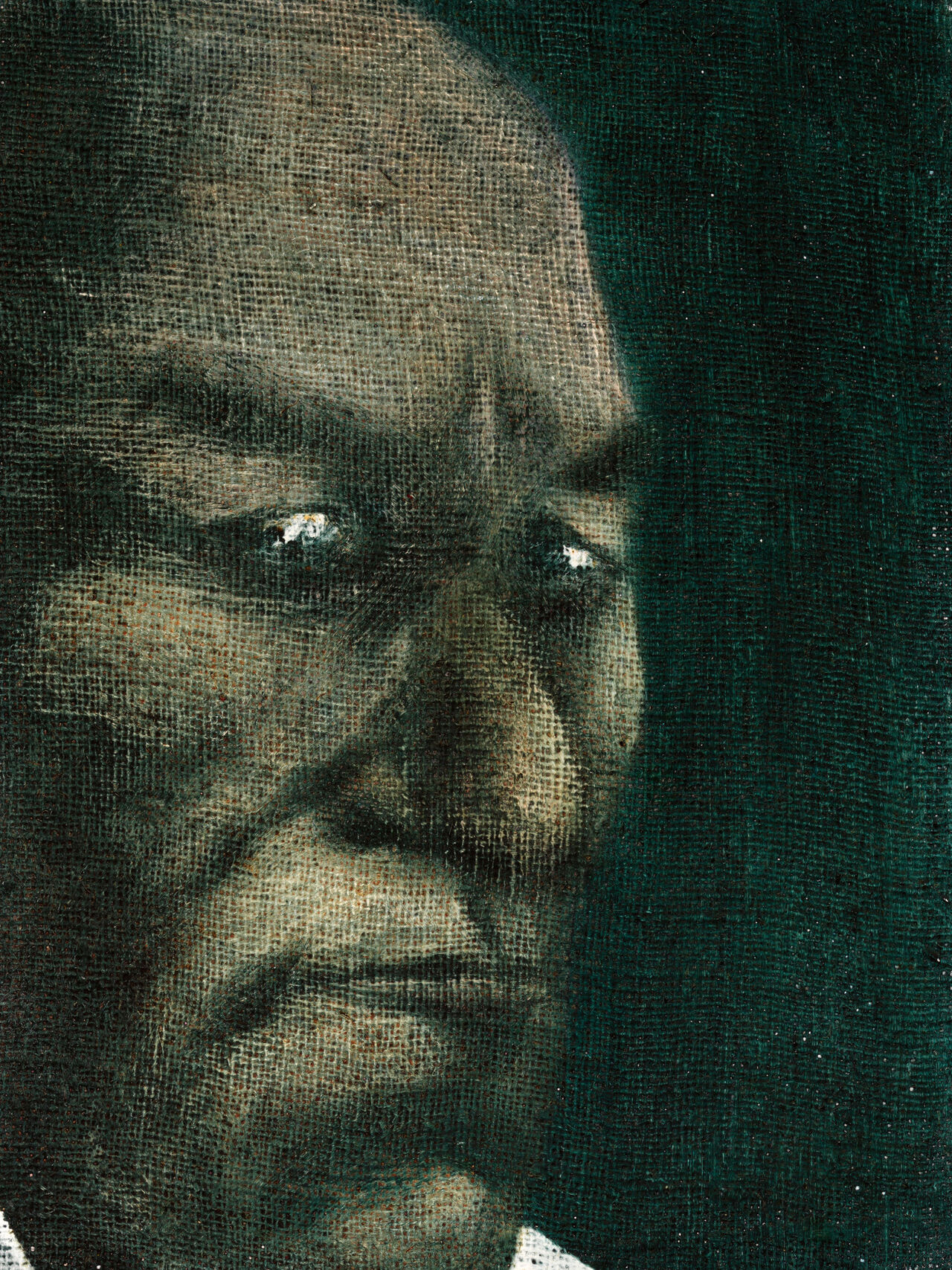Callum Innes 'Exposed Painting Grey/Red Oxide/ Ashphalt on White’
Laurence Simmons
Essays
Posted on 19 March 2025
Exposed Painting Grey/Red Oxide/Asphalt on White contains a mysterious ambiguity, but it also has a sharpness and precision. Mystery and delicacy suggest something deeply emotional, the tension between control and fluidity. The first thing to say is that the term abstract doesn’t really help us look at Innes’s work. It almost does the opposite suggesting that the art is cold, unthinking, predetermined. Whereas a painting like Exposed Painting seems to me to carry a charge of uncoiled and yet controlled emotion. And instead of representing just an element of the world it strives to create a world on its own. It is a world developed across and through a series of works. Hence the title of this painting; there are other ‘Exposeds’ with other colour combinations. Monochromatic colour zones within a precise geometry.
In his studio Innes dances from one work to another in choreographed steps. The title also tells you the process. Innes does what he calls ‘unpainting’: he applies washes of turpentine by brush to remove the paint he has already applied before it begins to dry. The result leaves vestigial traces of colour of the paint removed — the process is a sort of palimpsest in reverse. Trickles of seeping painting remain visible on the cloudy stained surface, accompanied by rivulets and exposed edges. Each painting ends up being a frozen moment, a moment caught between making and unmaking, adding and subtracting. The result being something not looked for but something found. Something that seems like it has happened of its own accord. And thus the feeling is not brought to the work, it comes from the work. “I like dissolving two colours together and creating a new colour,” Innes notes. “It’s about tension and creating space and light.”
Callum Innes was born in Edinburgh in 1962, went to art school there and still lives there. His work is now in major public collections around the world. He has said of his painting: “It’s all about the light off the east coast of Scotland.” Perhaps we might make too much of Innes’s Scottishness? He could be an American in the vein of Rothko or Newman, interested in pure images that convey some sort of spiritual grandeur, using colour or shape to suggest philosophical matters. And true his paintings, like Rothko’s, are soothing, looking at them for a long time has the effect that prayer must have had at some time in the past. But he is not American, his colours suggest the heather and earth of Scottish moors, his whites reflect a particular kind of light off the North Sea. He has claimed: “The research for my practice is actually being outside and walking down the coast… the colours are all there in the landscape.” So, Innes’s paintings are a pure geology of vague traces the world leaves behind. The lines of Exposed Painting are like those of nature, off kilter (a good Scottish word), drawn by hand. Fallible. Look at how top and left bottom line of the right-hand red oxide block bleeds into the white. And how the turpentine wash falls in a diagonal down its middle. Innes’s paintings are figurative even if they seem not. Each time Innes walks the coast there is a sense of an intrinsic geography and history in the works that result.
I am reminded of Scottish national poet Kathleen Jamie:
I walk at the land’s edge,
turning in my mind
a private predicament.
Today the sea is indigo.
…
but every time the sea
appears differently: today
a tumultuous dream,
flinging its waves ashore –

‘Exposed Painting Grey/Red Oxide/Ashphalt on White’
oil on linen canvas
signed and dated ’98 and
inscribed CI 98 56 verso
2310 x 2245mm
Exhibited
‘Callum Innes’, Frith Street
Gallery, London, England, 17
January – 5 March, 1998.
Provenance
Private collection, Auckland.
Purchased from Frith Street
Gallery, London, England, 1998.
$80 000 – $120 00


